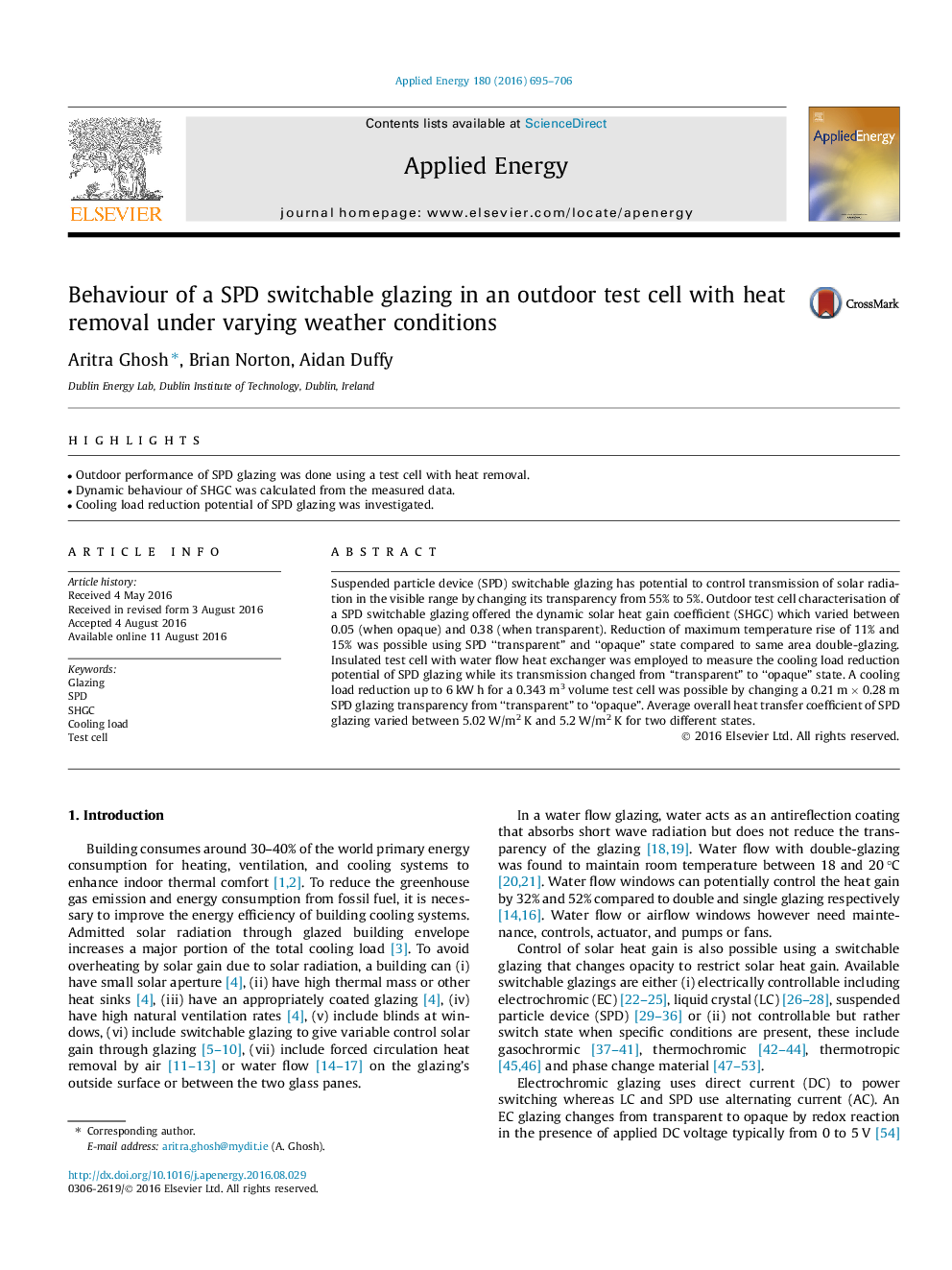| Article ID | Journal | Published Year | Pages | File Type |
|---|---|---|---|---|
| 6682292 | Applied Energy | 2016 | 12 Pages |
Abstract
Suspended particle device (SPD) switchable glazing has potential to control transmission of solar radiation in the visible range by changing its transparency from 55% to 5%. Outdoor test cell characterisation of a SPD switchable glazing offered the dynamic solar heat gain coefficient (SHGC) which varied between 0.05 (when opaque) and 0.38 (when transparent). Reduction of maximum temperature rise of 11% and 15% was possible using SPD “transparent” and “opaque” state compared to same area double-glazing. Insulated test cell with water flow heat exchanger was employed to measure the cooling load reduction potential of SPD glazing while its transmission changed from “transparent” to “opaque” state. A cooling load reduction up to 6 kW h for a 0.343 m3 volume test cell was possible by changing a 0.21 m Ã 0.28 m SPD glazing transparency from “transparent” to “opaque”. Average overall heat transfer coefficient of SPD glazing varied between 5.02 W/m2 K and 5.2 W/m2 K for two different states.
Keywords
Related Topics
Physical Sciences and Engineering
Energy
Energy Engineering and Power Technology
Authors
Aritra Ghosh, Brian Norton, Aidan Duffy,
